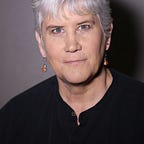Reach Out for What You Want: Visualize or Hallucinate? Balancing Dopamine
A Natural Brain Health and Healing Essay.
It is easier to reach out for what you want than to let go of what you don’t want. Applied to visualization, imagery and hallucinations, the research would suggest that it is easier to consciously create positive visualizations for yourself than to let go of or get rid of the hallucinations. Indications are that once you establish a visualization, guided or motor imagery practice the hallucinations or bad dreams will lessen on their own.
You may be interested to know that people with Parkinson’s disease (too little dopamine) are more engaged by the placebo effect while people with schizophrenia (too much dopamine) are less engaged by the placebo effect.
Exercise: Pick a Doorway
In this case imagine that each side of the cube can be balanced and improved by going through one of the doorways. Here are several things you can do to improve brain chemistry, dopamine balance, anger management, liver and gallbladder health as well as substantia nigra and basal ganglia function.
1. Eat cashews. They are high in nut fats and proteins, which help support brain function. They are also high in natural iron, which is a precursor to dopamine and important in sustaining red blood cell production and the oxygen carrying capacity of your blood. Leafy green and red vegetables are also high in iron and supportive of health in general as well as liver and gallbladder health.
2. Check into Community Support Agriculture (CSA) programs in your area to see how you can get fruits and vegetables that sustain you and your environment. Summer of 2013 I rode my bicycle 3000 miles across the United States in support of sustainable agriculture and food justice.
3. Get help with anger management through visualization, psychotherapy, exercises, walking, doing things that bring you pleasure, etc.
4. Consider what makes you angry. What helps you resolve feelings of anger? Practice taking a new perspective on the situation or relationship. How can you see things from a different perspective that will change how you feel about the world and the people around you? What do you do every day to improve your mood?
5. Play Charades or imagine that you are playing Charades. How would you physically express anger or its flip side, forgiveness, or compassion or empathy? What do these words look like or move like? Imagine how a friend or family member would express these words in a game of Charades.
Here are some movies, quotes and sayings that you can use in a real or imagined game of Charades.
Movies
The Upside of Anger
Anger Management
Colors of Compassion
Love! Valour! Compassion!
Matrix of Compassion
Sayings or Quotes
“Anger is a short madness.” — Horace (65–8 BC)
“Exaggeration is truth that has lost its temper.” — Kahlil Gibran (1883–1931)
“Fire in the heart sends smoke into the head.” — German Proverb
“If you are patient in one moment of anger, you will escape a hundred days of sorrow.” — Chinese Proverb
“If you kick a stone in anger you will hurt your foot.” — Korean saying
“Postpone today’s anger until tomorrow.” — Tagalog (Filipino) saying
“Forgiveness is the fragrance the violet sheds on the heel that has crushed it.” — Mark Twain
“Once a woman has forgiven her man, she must not reheat his sins for breakfast.” — Marlene Dietrich
“It’s easier to ask forgiveness than it is to get permission.” — Grace Hopper
“The weak can never forgive. Forgiveness is the attribute of the strong.” — Mahatma Gandhi
“The dew of compassion is a tear.” — Lord Byron
“If you want others to be happy, practice compassion. If you want to be happy, practice compassion.” — Dalai Lama
Some Research on Dopamine Anger, Fear, Anxiety, Physical and Emotional Pain
“The associations reported in this article suggest that the 9-repeat allele of the dopamine transporter is associated with angry-impulsive personality traits, independent of any link to mood disorder or borderline personality disorder (BPD) in depressed patients. This could form the basis of a dopaminergic neurobiological model of angry-impulsive personality traits.”
— Joyce, P. R., P. C. McHugh, et al. (2009). “Relationships between angry-impulsive personality traits and genetic polymorphisms of the dopamine transporter.” Biol Psychiatry 66(8): 717–721.
Find the connections: Anger management, Compassion, Liver, Gallbladder, Green, Iron, Dopamine, Placebo, Parkinson’s disease, Schizophrenia from the field of Sensational Medicine for People with Parkinson’s disease
Originally published at https://www.linkedin.com on May 28, 2014.
